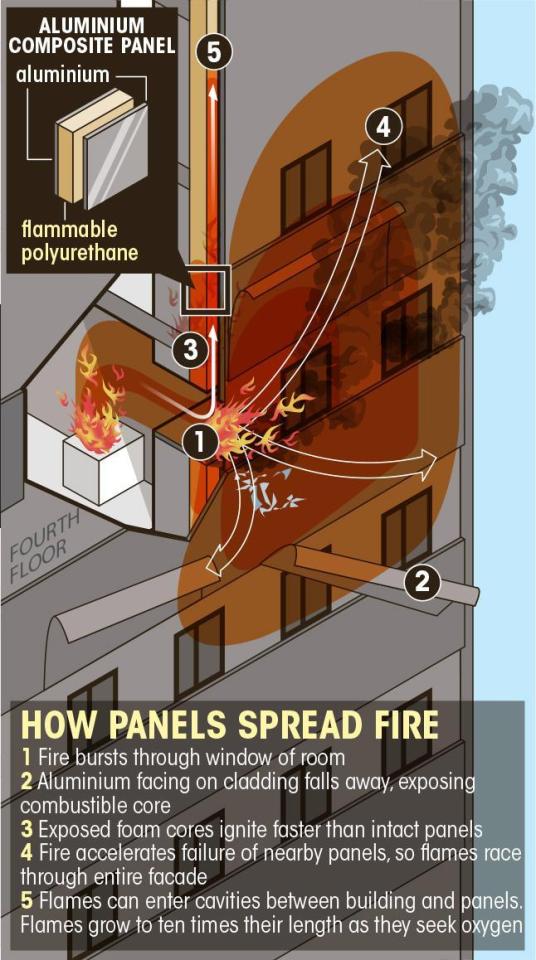Grenfell Tower fire – what caused it and where did it start?

THE blaze which tore through Grenfell Tower in West London left more than 70 dead in June 2017.
But what caused the fire, what was wrong with the cladding and what floor did the blaze start? Here's what we know.
What floor did the blaze start?
A large fire broke out just after 1am on Wednesday, June 14, 2017.
It is believed to have started on the fourth floor, before it quickly spread to the whole building.
At least 350 people were thought to be inside when the blaze began and some were still trapped hours later.
Desperate residents were heard screaming for help and horrified witnesses said they could see people waving sheets out of the windows, with some jumping from the building.
The blaze was not brought under control until 1.14am on Thursday, June 15, some 24 hours after it started.
Police later confirmed 72 people died in the fire, after victims Syrian refugee Mohammed Al Haj Ali, 23, and 24-year-old Khadija Saye were the first to be named.
What caused the Grenfell Tower fire?
Kensington and Chelsea London borough council built Grenfell Tower in 1974.
In May 2017, an £8.6million refurbishment was completed by Rydon Construction, as part of a wider transformation of the estate.
Work included new exterior cladding, replacement windows and a communal heating system.
The fire broke out at Behailu Kebede's fourth floor flat.
A public inquiry heard he was woken by his smoke alarm on June 14, immediately calling 999, alerted his flatmates and neighbours as soon as he saw smoke.
Mr Kebede left his home with no shoes, keys or wallet - not clutching his hastily assembled belongings as was reported at the time.
In the 2018 inquiry, a report into how the fire started heard from University of Dundee Professor Niamh Daeid who said that the fire began "in or around the tall fridge freezer".
It stopped short of saying it definitely started in the freezer itself.
What was wrong with the cladding and the doors?
After witnesses said flames spread up the exterior cladding, an urgent review of tower block safety was launched.
It is suspected the fire, which broke out at Mr Kebede's flat, set light to the flammable exterior cladding through the gaps around the flat windows.
Cladding was fitted to Grenfell Tower as part of a £9million refurb completed in May 2017.
Dense foam boards coated in zinc rainproof sheets were spaced 30mm apart across the 24-storey building, which housed 120 flats and at least 500 residents.
Just two months before the Grenfell fire London Fire Brigade warned all 33 councils in the capital about the risks of cladding on tower blocks.
Experts said the composite foam sandwich panels helped spread the fire quickly from the lower floors all the way up the block.
The material used in the cladding on Grenfell was the cheaper, more flammable version of the two available options, an investigation of the supply chain by claimed.
Fireproof cladding initially planned for Grenfell was reportedly downgraded so the council could save money.
It was claimed the “deathtrap” cladding is banned in America – and a fireproof version could have cost just £5,000 more.
The inquiry also found that the fire doors did not meet the legal minimum standard of 30 minutes’ fire resistance.
Read up on the Grenfell tower fire
Theresa May pledged £400million to remove all Grenfell-style cladding from high rises and on the eve of the first anniversary admitted her regret at not meeting with victims' families during the immediate aftermath of the tragedy.
In May 2018, the inquiry began with 72 seconds of silence in tribute to the victims of the disaster who included a stillborn baby.
The devastating blaze was described as "the city's greatest tragedy since World War Two" in a powerful statement by the inquiry's chairman Sir Martin Moore-Bick.










